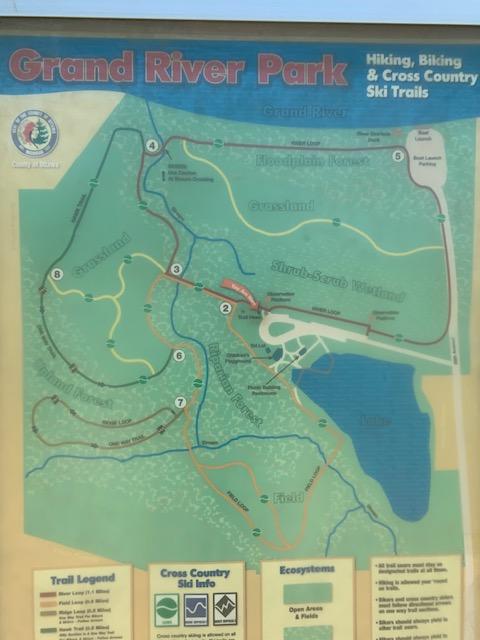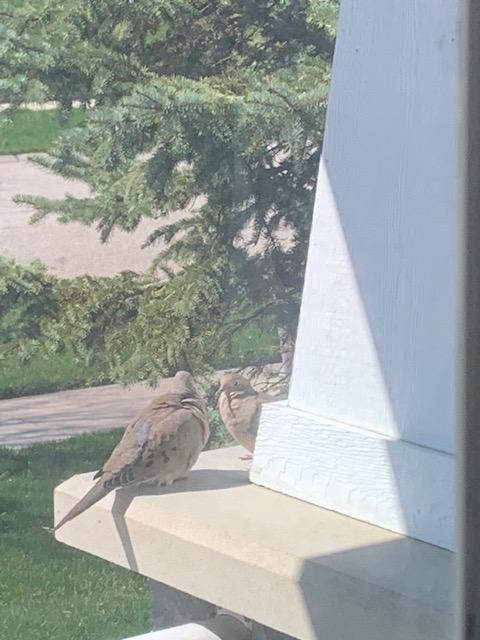Sarah
Forum Replies Created
Viewing 8 posts - 1 through 8 (of 8 total)
-
SarahParticipantActivity 2: I already have bird safe windows, keep cats indoors or on the 'catio,' and in some ways have reduced plastics, planted native species in our garden, and started to use eBird to begin contributing to citizen science. I could check to make sure the coffee I drink is bird friendly, and focus on buying produce that reduces pesticide use. I also could reduce plastics in my life more and participate more in citizen science. Activity 4: I am looking forward to continuing to learn how to ID different birds by sight and sound and create more lists on eBird to track my lifetime sightings and help with citizen science! This course inspired me to get familiar with birding technology and resources that help do this and are really pretty user friendly. I had previously felt kind of intimidated by them and didn't feel I was "good enough" at birding to make lists if I was by myself and not with an experienced birder. But everyone starts somewhere. I already loved birds but this course reminded me how interesting they are in many ways. Thanks for the great course!in reply to: Activities: Helping Birds in Your World #714281
-
SarahParticipantActivity 1: I made and submitted my first checklist on eBird! I hiked around a local park and added to my list whatever birds I could identify by listening or by sight. It wasn't very many, and I know I missed a lot of birds from either not recognizing their song/call or if they flew by it was too fast or far away for me to identify that way. However, I still reported 7 species (including 2 bald eagles sitting in trees by the river!), which is more than I would have realized if I had just been casually walking around. It's a start and I can see how eventually my lists will grow as I keep practicing and learning more bird calls. Activity 2: This winter I joined my county's Coffee with the Birds program, which introduced me to Ottawa county's different birding clubs and opportunities. They have been sending out weekly emails this spring including BOLO birds (be on the look out for..)in reply to: Activities: Keeping Track of Your Birdwatching #712880
-
SarahParticipantToday I went to a local park to try to recreate a recent virtual bird walk video from the county parks department, where the naturalist showed off the different habitats found in the park and therefore variety of birds common in each one. The areas I walked through included grassland, upland forest, riparian forest, field, and a little bit of shrub-scrub wetland. I could hear lots of birds but only see a few. I was able to notice how the bird songs and calls changed from each area, and use Merlin to identify a few of the calls, like the field sparrow which I heard the entire loop around the grassland but nowhere else. I'm also positive I heard an owl in the upland forest!! It sounded the closest to Great Horned Owl on Merlin (of the birds I compared it with). Birds that I saw and ID'd with Merlin were a Warbling Vireo in the upland forest and a Tree Swallow at the edge of the forest and pond.

 in reply to: Activities: Exploring Bird Habitats #706996
in reply to: Activities: Exploring Bird Habitats #706996 -
SarahParticipantActivity 3: I listened to bird songs outside by our bird feeder for 5 minutes, and thought I picked out 5 different songs/calls. It was definitely a chorus out there-there was constant sound from the birds and confusing to listen and pick out individual songs, and then keep track of what I had already heard or what was distinct or new. I recognized the red winged blackbird song, and common grackle had a chipping sound as it was close at the feeder. My other guesses from checking in with Merlin ID are black capped chickadee, because I've seen them around lately, and various warblers and finches based on songs or chirps I was hearing but can't identify specifically. This activity goes to show my ears can use a lot of practice listening to and picking out bird song. It was fun, though!in reply to: Activities: Noticing Behaviors #705477
-
SarahParticipantActivity 1: It was really interesting to compare the animated range maps. I had never thought about how northern Cardinals don't migrate the way the warblers do! Also, it was interesting to see how, with the two hummingbirds for example, they cover different regions of North America like Rufous Hummingbird takes the west coast and Ruby throated hummingbird takes the Mid/East. I noticed the Rufous hummingbird had a different migration path going back south than on the way north to breeding grounds. One thing that surprised me was how wide the range of Sandhill cranes is at one time during the year-reaching all the way to the north in Canada while some are still in the states! Activity 2: 3 birds that are year round residents in my area are Northern Cardinal, European Starling, and Red bellied Woodpecker, and I have seen each of those. 3 birds that migrate through the area and I have not yet seen are Sora, Dunlin, and Yellow throated Vireo. Activity 3: For both pairs, the colors and patterns seem much bolder and more strikingly cut in the summer plumage than the winter. The common loon really lightens up around it's neck/face in the winter too, instead of all black like the summerin reply to: Activities: Different Seasons, Different Birds #704704
-
SarahParticipantActivity 1: I just put up my first bird feeder today! I watched it, and there was some but not too much activity. Hopefully the birds I saw will spread the word to others! I saw a gold finch, and another bird with reddish coloring around it's head/chest area and brownish/gray the rest. By the time I got my binoculars out to get a closer look it was gone, but I wasn't sure if it was maybe a juvenile or female cardinal, or a house finch. Activity 2: I was honestly amazed when I looked at Merlin's most likely list for my area-there were way more species than I thought there would be! Many are birds I would expect by the lake shore but not right in my neighborhood. Listening to the sounds-one song I recognized but hadn't known which bird it was is the Northern Cardinal! Activity 3: I used ebird to look at birds at a nearby hotspot, and I read about the Ruby Crowned Kinglet, Veery, Bonaparte's Gull, Hooded Merganser, and Black billed Cuckoo.in reply to: Activities: Local Bird Exploration #701161
-
SarahParticipantFor Activity 1 I watched the Bird Cam at the feeder in Sapsucker woods at Cornell lab. I used Merlin to ID a couple of the birds-but by size/shape I could right away tell apart European Starling from Black Capped Chickadee. Other birds I ID'd at the feeder using Merlin were Red winged Blackbird and Baltimore Oriole (adult female). The Bird Cams are pretty cool-they're a great feature to use especially right now! For Activity 3, I saw a mallard looking for food in the pond/wetland area in our backyard. An American Robin was pecking at the ground around the neighborhood, and I also saw a Killdeer during my run that had been on the ground and took off as I went by. The Killdeer was tricky to ID using Merlin, I didn't put in the right identifiers at first, but luckily I had seen it's back/tail as it flew away so I saw the orangey/brown color on it's rump/tail. It's shape in the air and it's call helped me confirm that's what I saw as well.in reply to: Activities: Bird ID Practice #698317
-
SarahParticipantWall of Birds-I don't have one favorite but I really thought it was cool to also see extinct birds and read about them, too. Many of them were so huge! Around my neighborhood in the past week or so I've seen lots of robins, some mourning doves (a pair sat right by the window), an occasional heron, and I think some type of smaller shorebird, but I don't know which one. My favorite bird in the neighborhood right now is the robin, simply because I can almost always find one somewhere.
 in reply to: Activities: Exploring Birds #694520
in reply to: Activities: Exploring Birds #694520
Viewing 8 posts - 1 through 8 (of 8 total)


